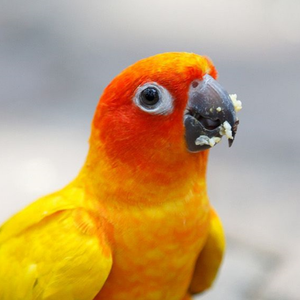Science 9: Unit 5 -Space Exploration
Beschreibung

|
Erstellt von Riley Babuik
vor fast 5 Jahre
|
|
Zusammenfassung der Ressource
Seite 1
Science 9: Unit 5 - Space Exploration Topic 1.1 - Space Timeline Orion and Ursa Major are patterns in stars(constellations) that were discovered by the First Nations. Geocentric Theory: Earth is the center of everything, and everything revolves around them. Proposed around 2000 years ago by Aristotle. Heliocentric Model: Sun is the center and everything revolves around it. Proposed in 1530 by Copernicus. Kepler helped by discovering that planets revolve around the sun in an oval shape. Days Significant to Ancient Cultures: Solstice: Days when the sun's path is farthest south or north of the equator. June 21 and December 21 Equinox: Days when the sun is right above the equator. March 21 and September 21. Early Space Technology: Astrolabe - Charts a star's azimuth, made by Arabians Cross-staff - Charts a star's altitude, made by Gurson Early Telescope - First made in the 1500s, allows us to look deep into space
Seite 2
Science 9: Unit 5 - Space Exploration Topic 1.2 - Our Solar System Solar System: A system containing a star, with other space bodies(planets, asteroids, etc.) revolving around it that are held together by gravity. - Proto-planet Hypothesis: Dust is pulled together and creates a solar system The Sun: An average-sized star that is in the center of our solar system. - Made of Hydrogen and Helium - 110x wider than Earth - Surface temperatures = 5500 C, Core = 15,000,000 C - Has a magnetic field - Has solar flares(flares coming off the sun) - Has sunspots(cooler spots on the sun) - Is 90% of our solar system The Terrestrial Planets: Mercury, Venus, Earth, Mars - Small and rocky - Shorter rotations and revolutions - Hottest planets The Jovial Planets: Jupiter, Saturn, Uranus, Neptune - Giant and gaseous - Longer rotations and revolutions - Coldest planets Mercury - Smallest Venus - Cloudy and hottest Earth - Supports life Mars - Has some water, covered in red sand Jupiter - Largest, tons of moons Saturn - Has rings, made of gas Uranus - "Rolls", has rings and made of ice Neptune - Made of ice Comet: A small ball of dust and ice that revolves around the sun. The ice melts, creating a trail. Asteroid: A field of rocks in-between Mars and Jupiter Natural Satellite: A naturally occurring space body that orbits a larger body Eg. The Moon Phases of the Moon: New Moon, Waxing Crescent, First Quarter, Waxing Gibbous, Full Moon, Waning Gibbous, Last Quarter, Waning Crescent...
Seite 3
Science 9: Unit 5 - Space Exploration Topic 1.3 - Space Bodies outside of Our Solar System Asterisms Vs. Constellations Asterisms: Unofficially recognized star groupings Eg. Big Dipper Constellations: Grouping of stars we see as a pattern in the sky Eg. Ersa Major Stars move according to the time of year. Galaxies: A collection of stars, planets, dust and space bodies joined by gravity. We are in the Milky Way Galaxy 3 Types: - Spiral - Elliptical - Irregular Star: Hot, glowing, sphere of gas that gives off tons of light Properties used to compare: - Size - Density - Temperature (Blue = hot, Red = cool) - Brightness - Bigger star = brighter - Age - Distance from observer Average Star's Life Cycle: Nebula: Gas and dust pulled together by gravity Average Star: Yellow, the beginning of the cycle Red Giant: Lots of growth White Dwarf: Shrinking Dense Black Dwarf Giant Star's Life Cycle: Nebula: Gas and dust pulled together by gravity Massive Star: Blue, beginning of the cycle Red Supergiant: Lots of growth Supernova: Large explosion that results in shrinking Either a Neutron star or Black Hole: Dense stars with lots of gravity Hertzsprung Russel Diagram: A diagram of temperature according to the brightness in stars
Seite 4
Science 9: Unit 5 - Space Exploration Topic 2.1 - Technology for Locating Space Objects Celestial Sphere: Used to predict the position of stars and planets by projecting a sphere into the sky. - Azimuth: The horizontal direction, measured using an astrolabe. 0 to 360 degrees. - Altitude: The vertical direction, measured using a quadrant. 0(horizon) to 90(zenith) degrees.
Optical Telescope: A device that gathers and focuses light to the eye - Reflecting: Uses mirrors to gather and focus light - Can be larger, cheaper and lighter - High maintenance - Refracting: Uses 2 or more double convex lens to focus light - Maintenance-free - Cannot be very large Interferometry: Using multiple telescopes to get a better image Space Telescope: A reflecting telescope in space (The Hubble Telescope) - Doesn't have the Earth's atmospheric pollution
Radio Telescope: Use radio waves(long, weak, can travel far)to map out stars, must be very large. - Works in any weather Array: Multiple radio telescopes spread out to gather more info Space Probes: Unmanned satellites that explore places humans can't Eg. Voyager I and Mars Rover
Seite 5
Science 9: Unit 5 - Space Exploration Topic 2.2 - Math for Locating Space Objects Astronomical Unit: Used for local solar system distances (distance from the Earth to the Sun = 149,597,870,700 KM!) Light Year: Used for intergalactic distances(how far light travels in a year = 9,500,000,000,000 KM!) Triangulation: To help measure the distance of objects based on triangles Choose a line of sight towards the object being measured Make a baseline perpendicular to line of sight, measure the baseline At each end of the baseline, mark the angle between the object and the end of the baseline Make a scale drawings using your measurements Parallax: The apparent shift of an object when viewed from different places
Möchten Sie kostenlos Ihre eigenen Notizen mit GoConqr erstellen? Mehr erfahren.
